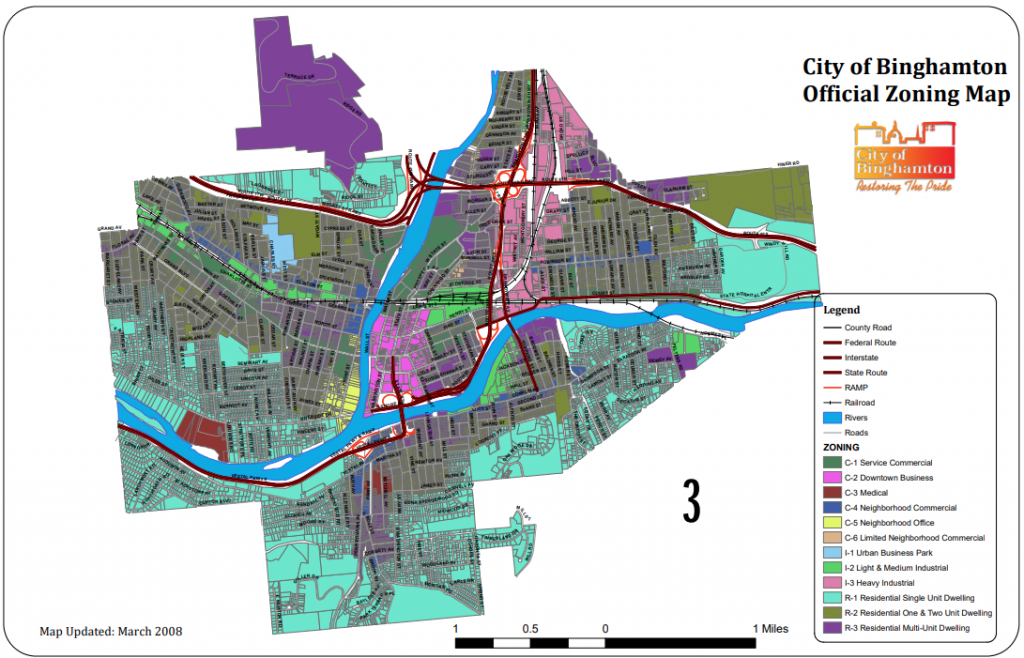Over the past couple of months, a proposed zoning law by Binghamton Mayor Jared Kraham, targeting student housing, has been making its way through city’s legislative channels.
If the law is passed, these are the zoning changes that will come into effect:
– R1 and R3 zones will be expanded into what was previously R1, R2, R3 and C1 zones. See “Regulation Changes” to determine how the proposed law would affect these types of zones.
– Houses on streets near Seminary Avenue, Riverside Drive and Oak Street would continue to be in R1 zones.
– A small portion of Chestnut Street classified as R1 would become R3.
– Portions of the city, including a small R1 zone near Chestnut Street, will become an R3 zone.
– The R3 districts, where congregate living — such as student living — is permissible, would be expanded into the “Urban Village” area, which includes streets such as Thorp Street, North Street, King Avenue and Seminary Avenue. This is where the majority of student housing currently is, according to the Planning Commission.
– Portions of the city, including parts in R2 zones, will be converted into R1 zones.
Alongside the zoning changes, several regulation changes from Kraham’s student housing proposal would also take effect. The following are such changes:
– The new definition of “family” will clearly exclude groups of four or more students living together. This will affect some groups of students looking to live in or continue living in R1 and R2 zones. Prosecution against student housing in these zones will begin July 1, 2023.
– The new definition of “family” would not apply to a group of young professionals living together. For example, under the proposed prohibition of student housing from residential areas, a group of unrelated young professionals could share a house but not a group of undergraduate students, according to WSKG.
– The new definition of “congregate living” would change from any residential unit with multiple unrelated occupants or six or more bedrooms, to any residential unit with five or more bedrooms, and up to ten beds, except in the case of single-family, detached, five bedroom houses. Congregate living is allowed in R3 zones.
– Students would assume the “burden of proof” when it comes to future housing violations, according to the Sept. 12 Planning Commission meeting. For example, if a zoning officer were to inspect a property, they would determine whether or not the residents were enrolled at Binghamton University. It would then be the student’s responsibility to prove whether or not they qualify as a family by appealing to the Zoning Board of Appeals.
– Properties currently renting to students in what would become newly off-limits zones can continue to do so. Property owners with documentation proving their property is a legal, nonconforming, five-or-more bedroom unit would be grandfathered in. Similar properties that are not legally recognized would be considered on a case-by-case basis by the Planning Commission, or would need to be reformatted, according to the Sept. 12 Planning Commission meeting.
– Residents or property developers who may want to convert their property, or another property, into a new congregate living facility would have to bring their proposal to the Planning Commission and demonstrate ownership of off-street parking, as stipulated in the new legislation. On-street parking near the congregate living facility, or parking in a public park, would not meet the requirements for private parking within 250 feet of the congregate living.
– By July 1, 2023, student housing in R3 zones will need to be reviewed and approved by the Planning Commission.



